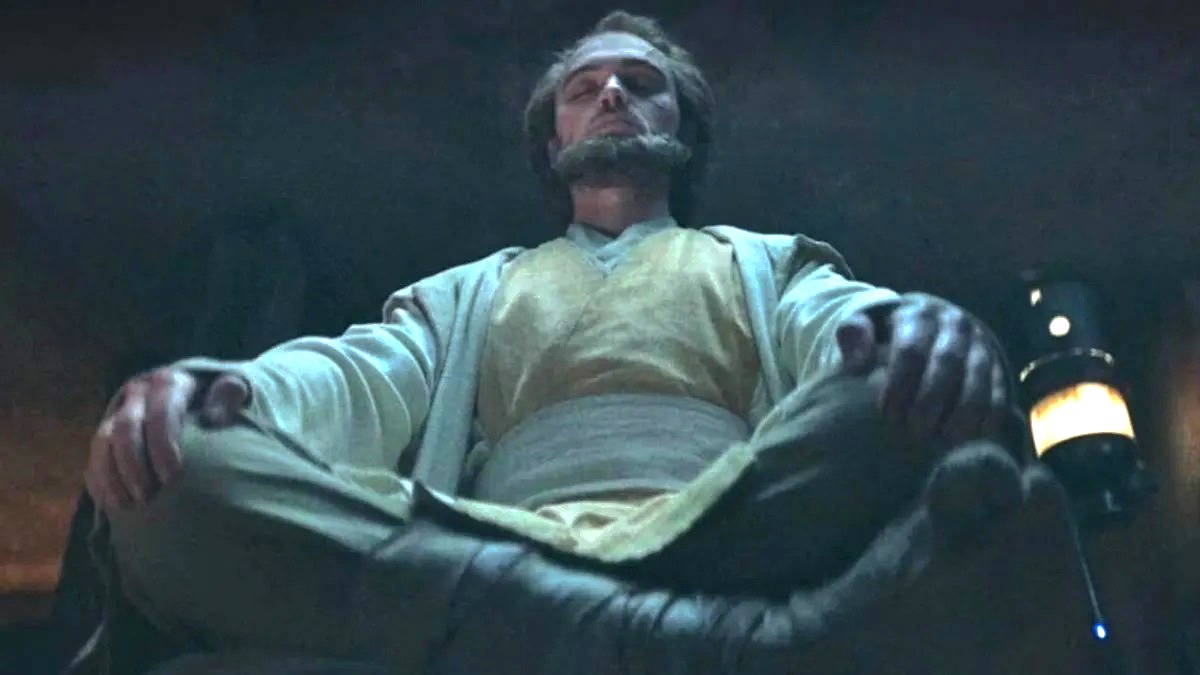‘The Acolyte’ Shines a Spotlight on the Jedi’s Weirdest Ritual
This lore goes hard.

The Acolyte has officially landed on Disney+, and so far, it’s living up to its promise of being a wildly different kind of Star Wars show—particularly, when it comes to depicting the Jedi. Episode 2 might’ve just demonstrated the most shocking use of the Force yet, begging the question: What is the Barash Vow?
The two-part premiere of Leslye Headland’s new Disney+ Star Wars series The Acolyte had its premiere on Disney+ yesterday, June 4, bringing fans back in time to the High Republic—roughly 100 years before the events of Star Wars: Episode I – The Phantom Menace. A generally unexplored point on the Star Wars timeline (aside from the many canon and EU novels), this era is defined by its peace and prosperity and sees the Republic—and the Jedi Order—at the height of their power.
However, it’s not all sunshine and roses, as The Acolyte follows twin sisters Mae and Osha (Amandla Stenberg), who find themselves on diverging paths after being separated in their youth. 16 years later, Osha, a former Jedi, is framed for her sister’s crimes after Mae slaughters Jedi Master Indara (Carrie-Anne Moss) with “all her strength,” placing the Jedi Order hot on her tail. Osha’s former Master, Sol (Lee Jung-jae), is sent to investigate, only to discover that Mae’s path of vengeance is being paved by a much darker force. Dafne Keen, Charlie Barnett, Rebecca Henderson, and Abigail Thorn also star.
Look, we’ve all seen the Jedi do some … questionable things in the past. Whether it be enlisting literal child soldiers to fight in the Clone Wars, mind-tricking innocents, becoming political puppets of the senate, or other Force BS, the Star Wars prequel trilogy is largely dedicated to explaining Order’s slow fall from grace, showing how even the most devout Jedi, including Master Yoda, lost their way. Qui-Gon Jinn (Liam Neeson), Ahsoka Tano (Ashley Eckstein/Rosario Dawson), and even Count Dooku (Christopher Lee) understood this, all choosing to either leave or question the Jedi Order and its ideals.
The Acolyte doesn’t seem like it’s holding back with its critique of the Jedi Order, either. Not only is it implied that they did something heinous enough for Osha to leave, but it also suggests that the Jedi are, as we’ve seen in previous Star Wars projects, terribly stuck in their ways, and lack empathy for their peers. Still, some Jedi are self-actualized enough to know that they’re not infallible beings, which is why they might take an usual oath known as the Barash Vow—a concept that just made its live-action debut in The Acolyte episode 2, “Revenge/Justice.”
What exactly is the Barash Vow?
It’s no secret that the Jedi have some pretty crazy lore, but the Barash Vow is particularly head-scratching. As the name suggests, the practice, which dates back to 382 BBY (per Wookiepedia), was named after High Republic Jedi Master Barash Silvain, who originated the vow after she accidentally escalated a conflict during an off-world mission. To atone for her actions, Silvain swore that she would never act on behalf of the Jedi again, and threw herself into self-isolation to reconnect with the Force.
This practice of refocusing often took years, and was mostly reserved for times when a Jedi felt they’d done a severe wrongdoing. Interestingly enough, even Vader placed himself into such exile after Order 66. Men will do literally anything but go to therapy.
Thousands of Jedi would follow suit in the following centuries, taking the Barash Vow to re-center themselves in the Force before eventually returning to their duties. This includes Jedi Master Torbin (Dean-Charles Chapman), who made his debut in the second episode of The Acolyte. In the show, we see Mae tracking down Torbin to the Jedi Temple on the planet Olega, suggesting that the pair has, as she would put it, “unfinished business.”
Warning! Spoilers for The Acolyte ahead.
We don’t get a beat-for-beat rundown of Mae and Torbin’s beef, but it’s clear that the Jedi Master is hiding something. However, when Mae closes in on Torbin, he’s impenetrable; a mysterious shield prohibits the assassin from getting close to his body, even though he’s deep in silent meditation, and has been for the better part of ten years. Later, Mae is able to coax Torbin into swallowing a deadly poison, taunting him about something that’s happened in his past, and using his shame against him—the event that most likely led him to take the Barash Vow. By the time Osha comes around, he’s already dead.
Epic lightsaber duels, dangerous missions, and cool outfits aside, it’s easy to forget that the Jedi are, essentially, religious zealots with their own set of rituals and practices. This makes Jedi more similar to the real-life monks and lamas who sought nirvana by completely separating themselves from society, living out their days in meditation. This sort of spiritual guidance is the driving force behind the Jedi, though it’s perhaps, a bit more bureaucratic. That’s exactly what makes the Barash Vow so jarring to see play out onscreen. The Jedi we all grew up watching were a far cry from this deep (albeit, kind of creepy?) level of commitment to the Force, which possibly explains why they strayed so far from their own ideals.
Maybe the Prequel era Jedi wouldn’t have suffered such a terrible fate had they taken the time to reconnect with the Force as Torbin, Silvain, and so many of their ancestors did instead of making themselves soldiers and political pawns. Either way, seeing the Barash Vow in The Acolyte is a huge win for fans of the High Republic era, and it’ll be interesting to see if this practice pops up in further episodes down the line.
Have a tip we should know? [email protected]